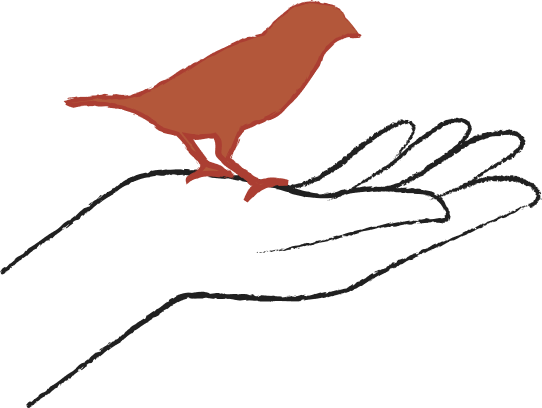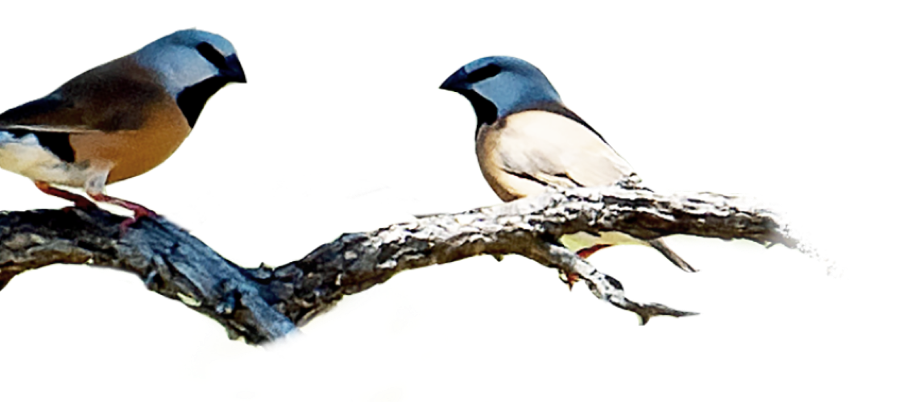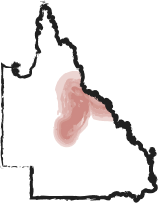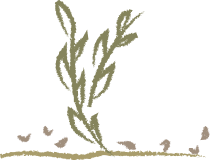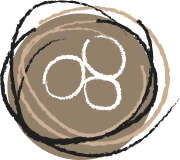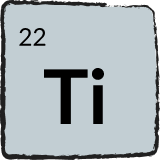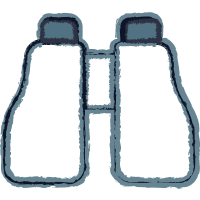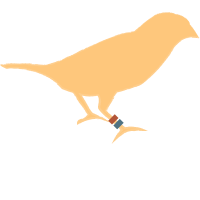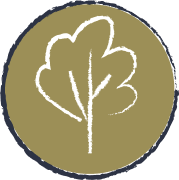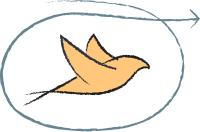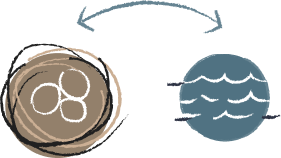Black-throated Finch Management Plan

The Black-throated Finch (the finch) is a small native bird known for a distinctive black mark beneath its beak. The finch is found in the Townsville region and in the Brigalow Belt and Desert Uplands bioregions in Queensland. The finch is also found near our Carmichael mine.
Bravus developed, as part of the approvals process for the Carmichael mine, a targeted Management Plan to monitor, understand, and ultimately protect the population of local finches and their habitat.
That Plan was based on seven years of expert ecological studies and includes both practical actions such as weed management, fire management, grazing management and enhancing water source locations as well as a five-yearlong research component led by world experts.
To support these activities, Bravus signed an agreement with Woongal Environmental Services (Woongal) to manage Black-throated Finch habitat on the non-mined areas of the leases and the conservation area. Majority owned by Aboriginal and Torres Strait Islander people, Woongal delivers environmental monitoring and management services and employs rangers, land and environmental managers, a graduate scientist and support staff – the majority of whom are First Nations people.
The Plan is now in full operation and our research scientists, First Nations rangers, and environmental team are on the ground working to monitor the behaviour and wellbeing of the finches.
Black-throated Finch fast facts
We’ve spent more than 12 years studying finches living in the area of our Carmichael mine. Get to know more about these fascinating native Australian birds.
Producing world-first insights
Bravus' Black-throated Finch research program is unlocking new scientific insights into this fascinating native bird. We have already made changes to our land management practices based on these key learnings to ensure the local finch population remains healthy, including:
This work has also informed the first official population estimate for the finch near the Carmichael mine: up to 2,200 finches across 102 sites within the combined 75,000 hectares of Bravus' pastoral lease and conservation area.
The report also demonstrated the practices implemented, such as fauna spotters during construction, ensured not a single finch was harmed in the construction of the Carmichael mine.
These findings complement the 2021 Black-throated Finch Management Plan Annual Report, which demonstrated Bravus’ plans to support the finch were working as planned and the finch is thriving. ”

Cultural fire burning practices
are conducted in partnership with Woongal Environmental Services to encourage the regeneration of important finch food species.
Cattle stocking rates
have been adjusted to manage grass and weed cover.
Pest animal and weed management
is undertaken to reduce impacts to habitat for the finch.Black-throated Finch research program
The Black-throated Finch research program started in 2020 and is principally investigating:
- finch nesting, breeding, and feeding requirements
- how far they move around the area, and
- how grazing management and water sources can best support the finch in the conservation area.
The results of the program are shared with the Queensland Government to improve management of Blackthroated Finch populations elsewhere in Queensland.
As part of the study, ecologists have deployed radio trackers and coloured bands on the finches to support the various research goals including habitat use, movements, foraging behaviour, nest site selection, and relationship with water.
Surveys and monitoring of the finch throughout the year include techniques ranging from active searches, water source inspections and surveys, remote camera observations and bioacoustics monitoring.
The research is delivered by third party experts who hold both Australian and Queensland government permits to conduct the research and safely monitor the finches.

How artificial intelligence is helping researchers
hear the call of the Black-throated Finch
Cutting-edge technology is powering Bravus’ research and management of the Black-throated Finch, with Queensland scientists using artificial intelligence to help automatically identify the birds’ calls.
Bravus partnered with Queensland researchers to develop an automated recogniser to improve the efficiency and accuracy of bioacoustic recordings of the finch population.
Bioacoustic recordings are used to identify finch calls to help track the birds moving around the study area and identify individual bird’s home ranges.
While bioacoustics recording technology can be used to record bird sounds for later human analysis, automated recognisers can instantly detect the target bird call and are a more accurate way to detect bird species than even visual surveys.
The researchers used machine learning, where computers are helped to teach themselves to use data and algorithms to improve their accuracy, to teach the program to accurately identify finch calls.
The innovation has the potential to support the development of better automatic monitoring systems for finch populations elsewhere in Queensland as well as other species of rare birds.
Managing local finch habitat
Bravus has signed an agreement with Woongal Environmental Services (Woongal) to manage Black-throated Finch habitat on the non-mined areas of our leases, and the conservation area.
Majority owned by Aboriginal and Torres Strait Islander people, Woongal delivers environmental monitoring and management services.
The new contract is a two-year program that will employ rangers, land and environmental managers, a graduate scientist and support staff – the majority of whom will be Indigenous. Services through the contract include environmental monitoring and management to support the finch including surveys, monitoring and reporting.
The work will also include land and weed management, installing fences to protect important and sensitive habitat, installing fire trails and undertaking fire management.



